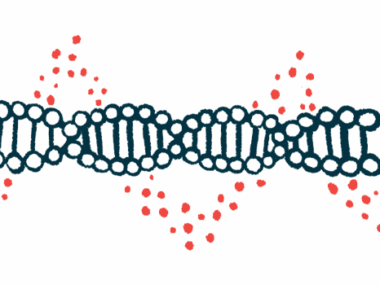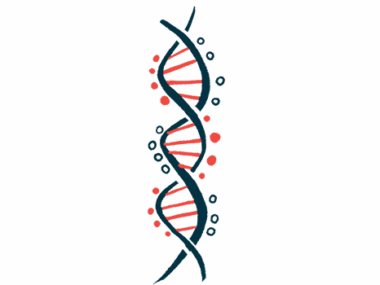Newly Identified Mutation in TNXB Gene Linked to Classical-like Ehlers-Danlos in Case Report
Written by |

A newly identified mutation in the TNXB gene, which leads to the loss of the Tenascin X protein, is associated with the development of classical-like Ehlers-Danlos syndromes (EDS), a rare subtype of EDS, according to a case report.
The report, “Clinical and Molecular Characterization of Classical-Like Ehlers-Danlos Syndrome Due to a Novel TNXB Variant,” was published in the journal Genes.
EDS is a clinically and genetically diverse group of connective tissue disorders that are typically caused by mutations in genes that provide instructions to make collagen, an important protein of the extracellular matrix (which provides structural support to cells).
Tenascin X (TNX)-deficiency is an unusual type of EDS caused by mutations in the TNXB gene, which leads to a lack of the TNX protein. According to the team, only “about 30 patients with complete TNX-deficiency have been described in literature” thus far.
TNX-deficiency was officially classified as “classical-like EDS” (clEDS) in 2017 due to its similarity to the classical form of EDS, without the presence of atrophic scarring (an indented scar that heals below the normal layer of skin).
Researchers here detailed the case of a patient with TNX-deficiency due to a newly found disease-causing mutation in the TNXB gene.
A 41-year-old woman was referred to the University Children’s Hospital of Zürich for a suspected connective tissue disorder.
While her family history was unremarkable, she had an extensive record of recurrent joint dislocations and of kyphoscoliosis (deformity of the spine) as a child. The patient continued to have spine problems, and developed degenerative disease in the knee joints.
Her skin texture was soft, dough-like, which is associated with skin hyper-extensibility (the ability of the skin to stretch beyond the normal range), a hallmark of EDS.
The patient also had deformities in the hands and feet — short and broad hands and feet, brachydactyly (shortening of the fingers and toes due to short bones), and acrogeria (premature aging characterized by fragile, thin skin on hands and feet). These were attributed to the underlying connective tissue disease and the role of TNX in hand and foot development.
She also showed varicose veins and ankle edema (swelling), which is seen in almost 30% of the TNX-deficient population.
At age 42, she had a perforation of the small bowel, which is also associated with TNX-deficiency.
Researchers initially looked to identify whether the patient had mutations suggestive of EDS. However, results of genetic analysis came back negative for mutations in the COL1A1 and COL1A2 genes, which contribute to the majority of EDS cases. She was also negative for mutations associated with 101 other connective tissue disorders.
As physicians suspected TNX-deficiency, they sequenced the patient’s TNXB gene.
Results revealed the presence of the c.5362del, p.(Thr1788Profs*100) mutation in the TNXB gene, which is associated with no TNX protein production.
Consistently, analysis of the patient’s cells revealed a complete absence of TNX protein in the extracellular matrix.
Next, researchers showed that while collagen production and secretion were unaffected in the patient’s cells, the connection between collagen and the extracellular matrix was significantly impaired.
A lack of TNX causes a loss of connection between collagen and the extracellular matrix, leading to the development of this connective tissue disorder.
“Although TNX-deficiency phenotypically resembles cEDS, absent atrophic scarring, the presence of short broad feet, brachydactyly, edema of the lower extremities, acrogeria, or the occurrence of hollow organ perforation should initiate targeted diagnostics for clEDS, either by measuring the TNX concentration in serum or by mutation analysis of the TNXB gene,” the researchers concluded.





